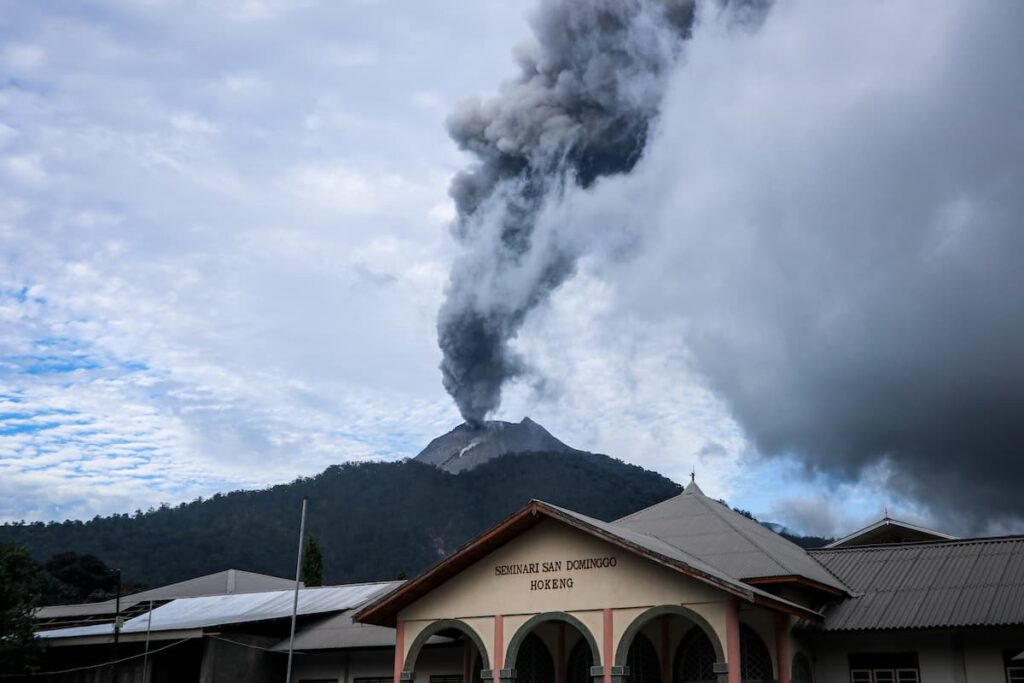Ongoing Volcanic Activity Prompts Highest Alert
A powerful volcanic eruption in eastern Indonesia has triggered heightened concern as thick clouds of ash reached over a kilometer into the sky. The eruption came shortly after officials raised the country’s highest alert level for volcanic activity, indicating a significant threat to nearby communities and the environment.
The volcano, located on the tourist island of Flores, has shown continuous signs of increased activity. After a dramatic burst of ash rising 1.2 kilometers above its peak, the mountain erupted once again later in the morning. The consistent seismic movement and ash production have confirmed what many feared: the situation remains volatile and unpredictable.
Second Eruption Confirms Escalating Risk
The morning explosion followed a series of intense eruptions that previously sent ash clouds soaring up to six kilometers high. This level of volcanic discharge suggests a rising level of internal pressure and instability within the mountain’s structure. The dual-peaked volcano, standing at 1,584 meters, has entered a phase of heightened activity, marking it as one of the most closely monitored geological sites in the region at present.
The possibility of further and stronger eruptions remains high. Authorities have responded swiftly by reinforcing safety measures, closely monitoring tremors, and keeping open lines of communication with local communities and tourism operators. The decision to elevate the alert to its highest level was made based on technical analysis and real-time data from Indonesia’s volcanology agency.
Urgent Safety Precautions for Nearby Communities
In response to the ongoing volcanic threat, officials have urged residents in nearby areas to take immediate protective measures. Face masks are being recommended as a daily necessity to guard against the inhalation of fine ash particles that can cause respiratory issues, especially for vulnerable individuals like children and the elderly.
Furthermore, a strict no-go zone has been established around the volcano. No activities are permitted within a six-kilometer radius of the crater, a decision taken to prevent potential loss of life in case of a more intense eruption or sudden volcanic event. This safety perimeter is being enforced by local authorities, with support from disaster response teams who are on standby should evacuations become necessary.
The geographical landscape surrounding the volcano also brings another serious risk: lahars. These are dangerous flows of volcanic mud and debris that often occur when heavy rain mixes with loose volcanic material. Residents living along rivers that originate from the volcano’s slopes are being advised to stay alert, especially during rainy conditions, which could trigger these hazardous mudflows without warning.
Tourism and Environmental Concerns
The island of Flores, known for its stunning natural beauty and increasing popularity among travelers, is facing a critical moment. While tourism has been a key economic driver for the area, safety takes precedence. Travel advisories are expected to be updated, and tourist access to the volcano has been halted.
Beyond human activity, the environmental impact of volcanic ash cannot be overlooked. Ash clouds can affect air quality, damage crops, and disrupt the ecosystem. Continuous monitoring is necessary to assess long-term implications on local agriculture and biodiversity.
Despite the risks, volcanoes like this one are a natural part of Indonesia’s dynamic landscape. The country sits along the Pacific Ring of Fire, a region known for its frequent seismic and volcanic activity. These geological processes, while dangerous, are also responsible for shaping the islands and their unique terrain.


